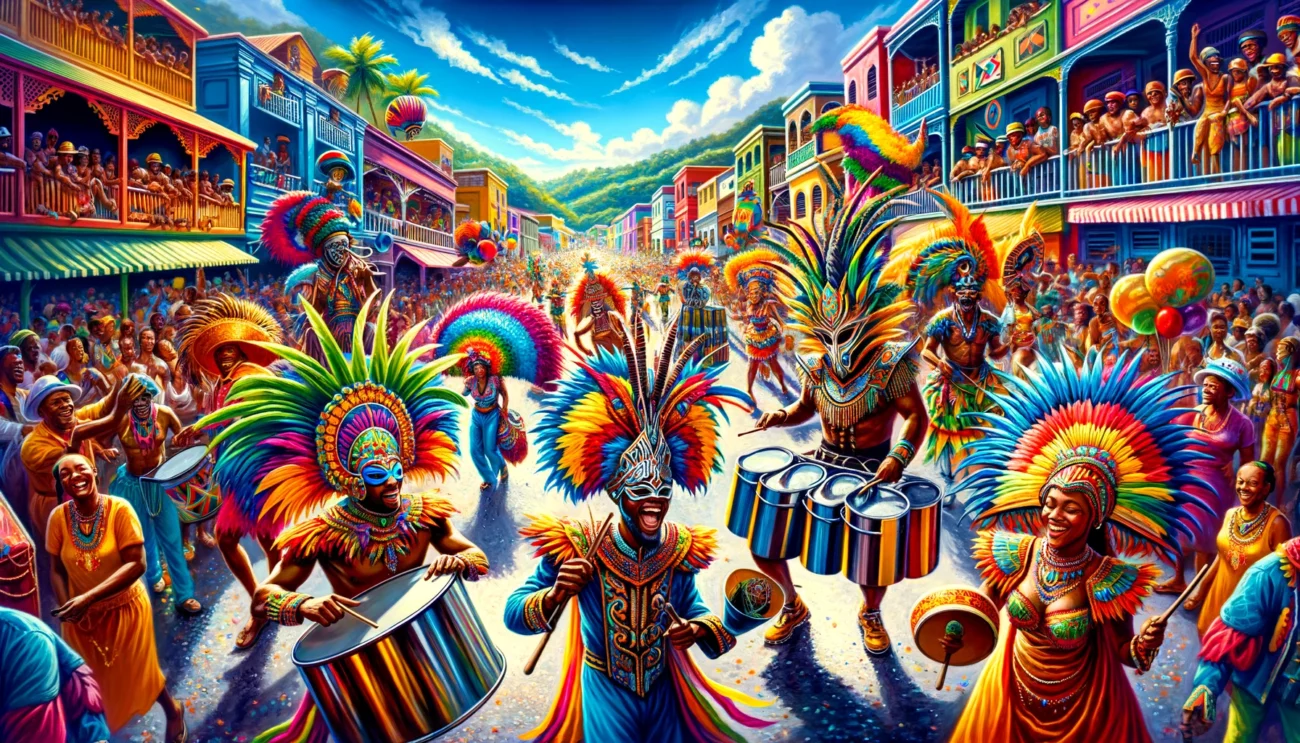Trinidad and Tobago Folklore, a twin-island nation in the Caribbean, is renowned for its vibrant folklore that intertwines the customs, traditions, and stories of its diverse populace.
From the enigmatic tales of soucouyants to the enchanting beats of calypso, this rich folklore provides an insightful window into the nation's cultural heritage and collective imagination.
The Origins and Evolution of Trinidad and Tobago Folklore
The Trinidad and Tobago folklore has evolved from the myriad of ethnic groups that have settled on the islands over the centuries, including Indigenous peoples, Africans, Indians, Europeans, and Chinese.
Each group brought their unique myths, legends, and customs, which have intermingled to create a unique cultural mosaic.
Indigenous Contributions
- Carib and Arawak Legends: These include rich narratives about the origins of the islands, nature, and the cosmos, stressing a deep connection with the environment.
African Heritage
- Anansi Stories: These tales feature Anansi the spider, a cunning trickster, originating from West African Ashanti folklore.
- Obeah: Spiritual practices rooted in African traditions, often misunderstood and portrayed in folklore as supernatural powers.
East Indian Influences
- Ramleela and Divali: Dramatic representations of Hindu epics and the celebration of the festival of lights, reflecting themes of victory and spiritual enlightenment.
European Folklore
- Fairy Tales and Ghost Stories: Stories brought by European settlers often feature mystical creatures and moral lessons adapted to the local context.
4 Major Characters in Trinidad and Tobago Folklore
In Trinidad and Tobago folklore, characters often symbolize human traits such as wisdom, mischief, and morality. These characters are central to the folklore's narrative structure.
1. The Soucouyant
- Nature: A shape-shifting witch who sucks the blood of her victims by night.
- Cultural Significance: Represents the dual nature of man and the fear of the unknown.
2. The La Diablesse
- Appearance: Portrayed as a stunning woman who conceals a cow's hoof beneath her dress.
- Symbolism: Embodies deception and warns against the dangers of succumbing to surface allure.
3. Papa Bois
- Depiction: Guardian of the forests, often visualized as an elderly man with features of trees and animals.
- Role: Stands as a symbol of environmental conservation and respect for nature.
4. Douens
- Traits: Child-like spirits with backward feet and no faces.
- Lesson: These spirits teach children the importance of obedience and the dangers of wandering alone.

Folklore in Cultural Practices and Celebrations
Trinidad and Tobago folklore is vibrantly alive in its numerous cultural practices and festivals, which are crucial for community bonding and the reinforcement of a shared cultural identity.
Music and Dance
- Calypso: Rooted in African rhythms, this music genre blends insightful commentary on social issues with lively beats.
- Steelpan: Originally crafted from oil barrels, the steelpan is a testament to the innovation of Trinidadians and is central to the musical landscape of the islands.
Festivals
- Carnival: Known worldwide, this festival features a kaleidoscope of costumes, parades, and musical competitions, showcasing the island's rich cultural tapestry.
- Hosay: A multicultural festival derived from Shia Muslim commemorations, now celebrated by the wider community with processions and ornate tadjahs.
Preserving Folklore in the Modern Age
In the face of globalization and technological advancements, Trinidad and Tobago has taken significant steps to preserve its folklore traditions while adapting them to contemporary contexts.
Educational and Cultural Initiatives
- Integration into Education: Schools across the islands incorporate folklore into their curricula to educate young people about their heritage.
- Community Events: Regular storytelling sessions and folk performances help to keep the traditions alive in community memory.
Technological Adaptations
- Digital Storytelling: Animations and digital media are increasingly used to reinterpret traditional stories for today’s audience.
- Online Archives: Digital repositories and online platforms ensure that Trinidad and Tobago folklore is preserved and accessible globally.
Conclusion
The Trinidad and Tobago folklore is a profound reflection of the nation's complex history and cultural diversity.
These stories and characters not only provide entertainment but also serve to impart moral lessons and foster a deep sense of national identity and community.
As Trinidad and Tobago continues to navigate the challenges of the modern world, its folklore remains a vital link to the past, offering timeless lessons and enduring wisdom.
